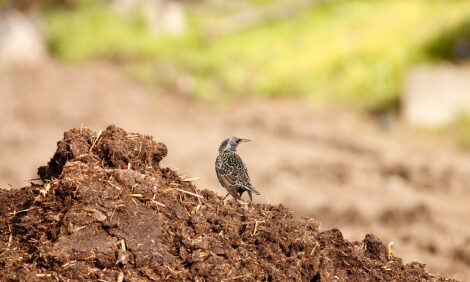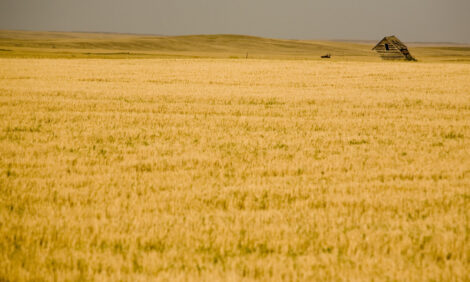



Global Organic Food Market Growing
ANALYSIS - The global market for organic food grew by more than 25 per cent since the start of the global economic crisis between 2008 and 2011.According to the Soil Association’s Organic Market Report 2013, worldwide sales of organic food and drink reached $63 billion – more than €45 billion – by the end of 2011.
The latest figures from the Research Institute of Organic Agriculture (FiBL) and the International Federation of Organic Agriculture Movements (IFOAM) organic farming is practised in 162 countries.
In 2011 37.2 million hectares of farmland were managed organically and organic farming had a 0.86 per cent share of agricultural land surveyed.
The report says that it is estimated that there are another 32.5 million hectares of organic wild areas and non-agricultural land bringing the total organic farm land to 69.7 million hectares.
The countries with the largest organic areas of form land are Argentina, the US and Australia, which the Falkland Islands with 35.9 per cent if its land, Liechtenstein with 27.3 per cent if its land and Austria with 19.7 per cent of its land have the highest proportions of organic farm land.
Oceania has 12.2 million hectares of organic farmland, Europe 10.6 million hectares and Latin America 8.4 million hectares, while Asia had 2.8 million hectares.
The greatest demand for organic food is in the US and Europe – accounting for more than 90 per cent of sales.
Sales in the US during 2011, the latest year recorded in the report, were worth €21 billion. In Europe, Germany had sales worth €6.6 billion, while France had sales of €3.8 billion.
While Europe as a whole is experiencing a rise in organic food sales, the UK has seen its market slide.
The UK saw a 1.5 per cent decrease in sales overall in 2011 down to £1.64 billion and the number of businesses fell by 4.9 per cent to 6,929. The amount of farmland devoted to organic farming also fell – by 8.7 per cent to 656,000 hectares.
However, the report shows that despite these falls, there are areas of significant growth for organic Products including parts of the dairy sector, large specialist retailers, home delivery, non-food products and catering.
In Europe, the highest average annual consumption was in Switzerland, where it reached €177 per person. In Denmark it was €162 and Luxembourg €134.
The highest market shares of the food and drink market for organic products were in Denmark, Switzerland and Austria.
Europe is the largest consumer of organic foods and overall organic farming accounts for 2.2 per cent of the total European farm land and 5.4 of the farm land within the EU.
Overall in Europe organic sales grew by nine per cent in 2011 to reach €21.5 billion.
The Soil Association report shows that the US organic market, while being the biggest, is dominated by large companies throughout the supply chain.
With an organic land area of 2.7 million hectares, the market is worth €22.9 billion and sales of organic produce grew by 9.4 per cent in 2011 to €21 billion. Organic products now account for four per cent of food and drink sales.
The US organic market received a boost in the middle of last year, when EU and US organic standards were recognised as equivalent, removing the need for separate certification.
The report says that Latin America with 8.4 million hectares of organic farm land is an important producer and exporter, with growing domestic consumer markets and with Brazil leading the way.
The report shows that the Asian market for organic produce is growing steadily as the awareness of organic methods bolsters demand.
Most sales are in the affluent countries such as Japan, South Korea, Taiwan, Hong Kong, Malaysia and Singapore.
Most of the organic produce, however, is imported from Australasia, Europe and the US.
The market in Australia, New Zealand and the Pacific Islands is relatively small, but Australia and New Zealand are both important producers of organic product.
The report says that Africa is a continent of mass small-scale organic farming with more than half a million producers on 1.1 million hectares of land. Almost all the organic produce goes for export and largely to the EU.
The report concludes: “Against an uncertain background in the UK there is encouraging news in the continuing growth of organic food sales elsewhere in Europe and in North America.
“This growth shows no sign of abating, and indicates that the long-term prospects for the organic market in the UK should also be good.
“It is hard to anticipate when the UK market will return to growth, but less difficult to predict that it will surely do so.
“The new wave of interest in ethical shopping among young consumers has the potential to lead the organic revival.”








